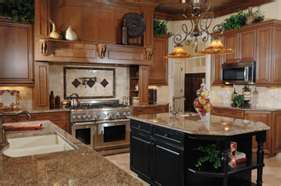Do You Have One Of These Five Annoyances Occurring With Your Hardwood Flooring?
Whenever you first mounted hardwood flooring all through your home, you’d anticipated it might remain spectacular for years. You wanted the wood’s elegance to grant the spaces an aesthetic appeal and wow your friends and family members. Even though these are fair expectations, matters occasionally come out in a different way. Your flooring surfaces will often have developed situations, some of which might seem serious.
Underneath, we’re going to describe five concerns that may surface with your Denver hardwood flooring
Along the way, we’ll distinguish the aspects that make contributions to them, and present ideas for getting them settled. The list below is by no means complete. However it does offer a peek at the blemishes you might someday observe (or hear) in your flooring surfaces.
#1 – Buckling Floor Boards
Any time planks buckle, their centers rise above their perimeters. They seem to curve to the outside, as if ballooning off the subfloor. Normally, this is brought on by being exposed to significant moisture content, which include water damage. It will also happen when the planks are nailed poorly to the subfloor.
It can be easy to take away the defective planks, and permit them to dry up. Once dry – and after the cause of the wetness has been cleaned up and removed – they may be changed out with nothing but minor touch-ups
More commonly, the damaged boards need to be swapped out with brand new ones. Many people wait too long to have buckling flooring resolved, making it possible for the damage to worsen.
#2 – Cupped Boards
Cupping occurs when the boards’ centers fall beneath their edges (the opposite of buckling). This concern also is caused by wetness. Many cases of cupping are due to moisture in the air (i.e. high humidity). Some cases result from moisture under the flooring, as could happen when home appliances leak or a property has poor drainage.
Just like buckling, the origin of the moisture must be eradicated to allow the boards an opportunity to dry up; if mugginess is the cause, a dehumidifier may need to be put in the room in which cupping has taken place.
#3 – Gapping Between The Floor Planks
A modest amount of spacing between your wood boards is normal
As the degree of dampness in the air shifts – specifically from season to season – breaks could very well show up. This comes about when dry weather conditions pulls water from the boards, causing them to contract; this could furthermore develop in the course of cold weather if a heating unit is employed inside your home. Once the humidity in the air increases, the spaces have a tendency to close up.
Significant spaces that appear between the planks are abnormal and often permanent. They are often caused by inappropriate safe-keeping of the product prior to installation. If the planks aren’t permitted to acclimate to the set up environment, the shift in dampness can result in considerable gapping. The only way to repair the floor is to exchange the boards.
#4 – Squeaking And Other Noise
When hardwood flooring is loud, it implies there exists some type of mobility. For example, the boards may not be attached effectively to the subfloor. This may occur due to poor nailing or inadequate glue used during glue-down setups.
In some instances, the tongue and groove characteristic of the boards makes it possible for the sides to move in opposition to each other. This is commonly a milling problem.
Solving squeaky floors is moderately simple. If the boards aren’t fixed thoroughly to the subflooring, adding face nails or glue ought to fix the problem; if the boards are milled inadequately, they need to be swapped out.
#5 – Rough Floor Boards In Areas
If the surface of the boards seems abrasive to the touch, it indicates they haven’t been properly maintained. For instance, dust might happen to be caught underfoot and ground into the planks; or, a pet’s claws might have caused small chips. Sometimes, exposure to drops of water could cause small pockets to form on the surface.
The only method to fix this concern is to refinish the boards. Once a new finish has become applied, better care needs to be taken to preserve the flooring.
A majority of the difficulties that may have an effect on your hardwood floors are preventable. Most issues develop because of poor installation, lack of acclimation, or poor maintenance. Keep these things in mind when installing and fixing your hardwood flooring.




